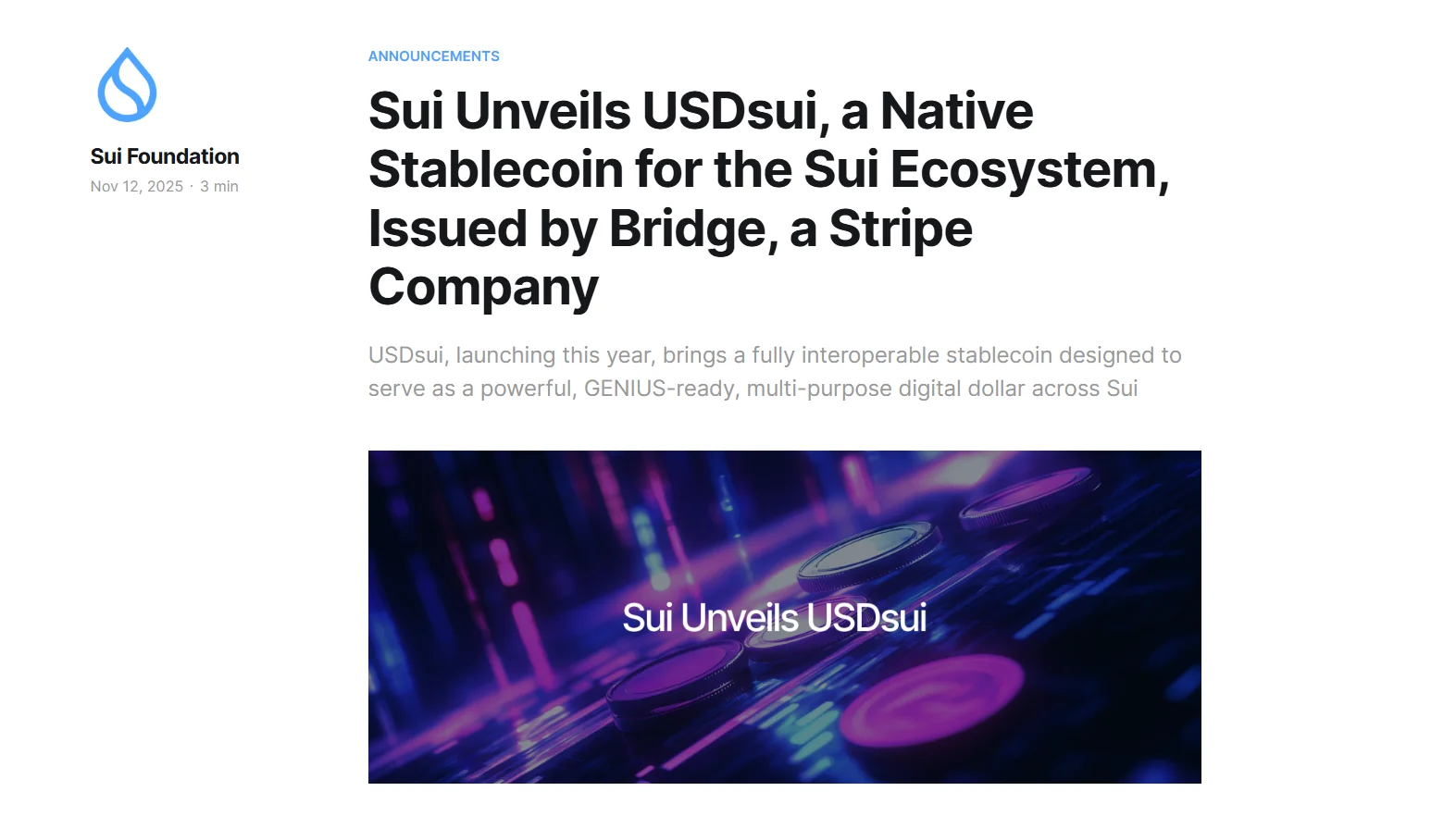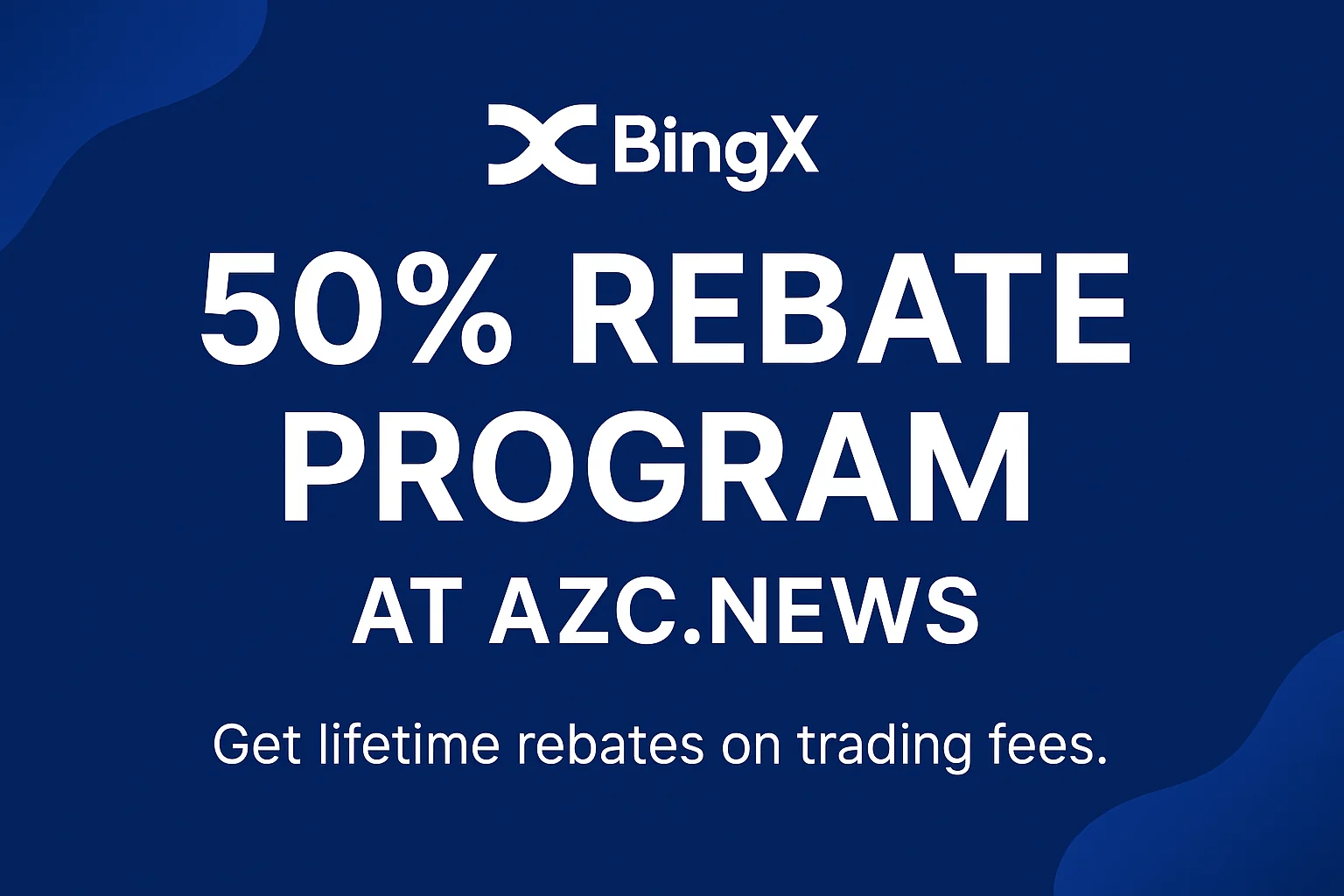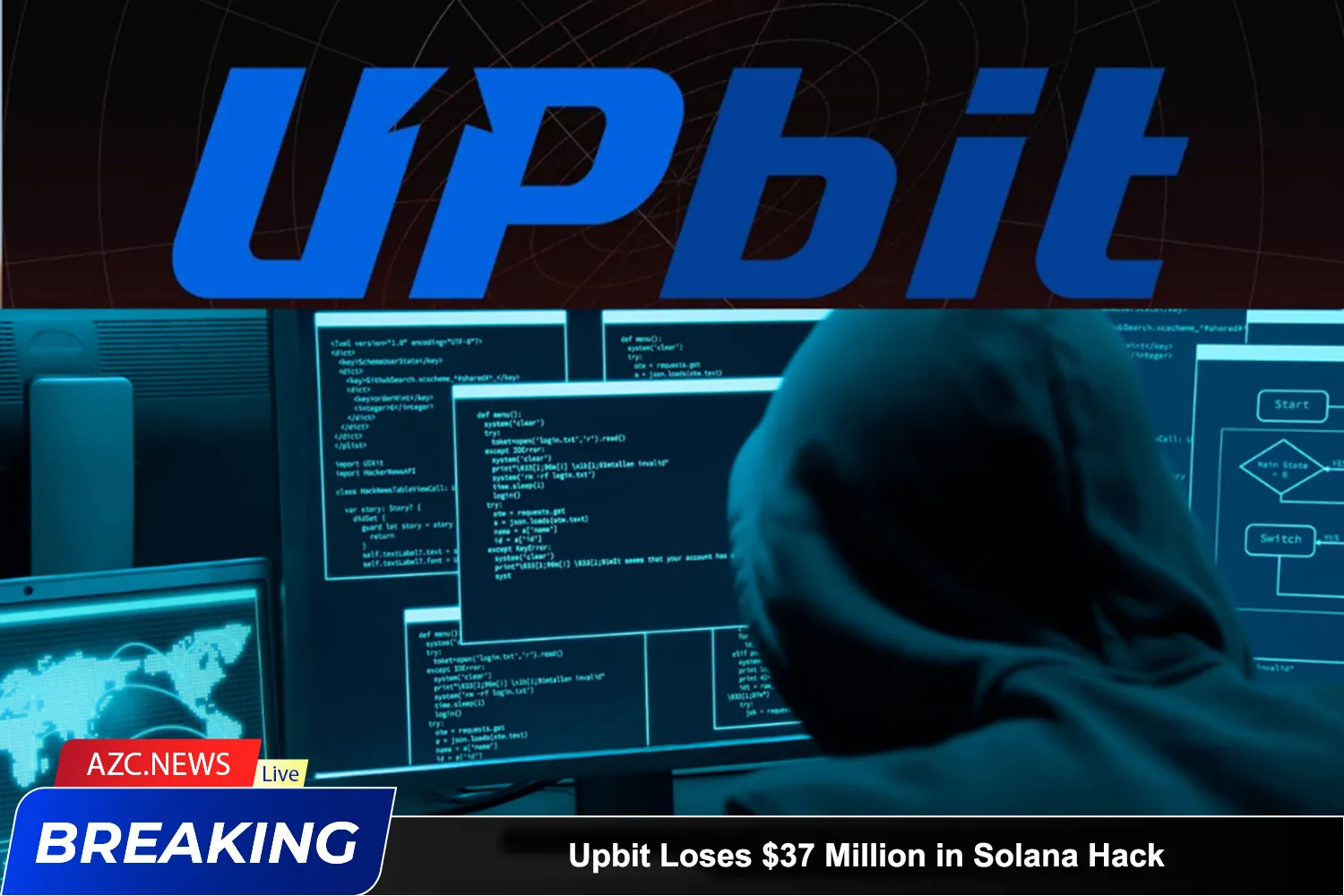Sui has officially launched USDsui, its native stablecoin built on Bridge’s Open Issuance platform — the same company acquired by Stripe for $1.1 billion in early 2025. The move marks a major strategic shift for the Sui ecosystem as more blockchains are turning to native stablecoins rather than relying on USDC or USDT.
Stripe-backed infrastructure: a major advantage in compliance and reliability
Sui’s partnership with Bridge brings enterprise-grade infrastructure, backed by Stripe’s experience processing $1.4 trillion in payments along with extensive regulatory expertise. This positions USDsui differently from crypto-native issuers like Ethena Labs or established players like Circle.
According to Mysten Labs, USDsui will directly connect Sui-native assets to global commerce, fintech networks, and traditional payment rails, and will comply with the GENIUS Act once it takes effect. The stablecoin will also be interoperable with other assets issued via Bridge on Phantom, Hyperliquid, and MetaMask.
Why Sui needed a native stablecoin

Between August and September 2025, the Sui network processed $412 billion in stablecoin transfer volume. Under the traditional model, nearly all fees from this activity flowed to Circle or Tether.
By launching USDsui, Sui ensures that this revenue returns to its own ecosystem, supporting growth initiatives and community programs.
A tense and fragmented stablecoin landscape
The year 2025 saw an unprecedented fragmentation in the stablecoin sector:
-
Ethena Labs expanded its “Stablecoin-as-a-Service” model to Solana, Sui, and MegaETH.
-
PayPal extended PYUSD to Solana and Stellar.
-
Hyperliquid’s validators are selecting an issuer for USDH to manage a $5.9 billion reserve.
Each approach carries its own advantages: Ethena provides a crypto-native yield-driven design, PayPal offers regulatory trust along with brand recognition, and Bridge delivers traditional financial legitimacy with customizable issuance.
Bridge emphasizes that Open Issuance allows blockchains to deploy their own stablecoins quickly and efficiently, without relying on bridging or secondary deployments of USDC/USDT.






